Program
PHYSICS OF COSMIC-RAY ACCELERATION AND TRANSPORT
BASICS OF PARTICLE ACCELERATION IN ASTROPHYSICAL SYSTEMS

Luke Drury School of Cosmic Physics, Dublin Institute for Advanced Studies
The course will cover the fundamental plasma physics and magnetohydrodynamics of astrophysical particle acceleration with an emphasis on shock acceleration and magnetic reconnection as the currently most probable mechanisms. The limitations of our current understanding will be discussed.
References
- "An introduction to the theory of diffusive shock acceleration of energetic particles in tenuous plasmas", Drury, L. O'C., Reports on Progress in Physics 46 (8), 973 (1983) : article.pdf
- "Nonlinear theory of diffusive acceleration of particles by shock waves", MA Malkov, LOC Drury, Reports on Progress in Physics 64 (4), 429 (2001) : "article.pdf
Prerequisites
The course will mostly be self-contained.
THE MICROPHYSICS OF COSMIC RAY TRANSPORT IN THE INTERSTELLAR MEDIUM

Alexandre Marcowith Laboratoire Univers et Particules de Montpellier
Cosmic Rays (CRs) after being released from their sources (Supernova remnants, Massive star cluster, pulsar wind nebulae ....) propagate in the interstellar medium (ISM) through their interaction with electromagnetic fields. It is known that the magnetic field in the ISM is composed of a turbulent and a mean component. The turbulent magnetic component induces a diffusion of the CR pitch-angle (the angle between the CR velocity and magnetic field lines) which translates into a parallel and perpendicular diffusion of the particles with respect to the mean field. The magnetic turbulence itself through the process of magnetic field line wandering produces a perpendicular spatial transport of the particles either. Magnetic/electric field - particle interaction in fact involves the action of plasma waves, best described in the magneto-hydrodynamic approximation because the Larmor radius of CRs is not negligible with the scale of the system under consideration. In this series of two lectures we will consider the microphysics of the CR transport.
- Physics of CR transport — Different type of transport – the phenomenon of wave-particle resonance – a rapid tour of MHD waves –a general introduction of the calculation of the diffusion coefficients in the quasi-linear theory – limitations of the quasi-linear theory and some non-linear developments.
- Astrophysics of CR transport — The magnetohydrodynamic turbulence in the ISM – the different ISM phases and their impact over MHD turbulence and CR propagation – some recent modeling of CR transport: self-generated turbulence versus background turbulence – Propagation close to sources: CR halos.
Useful books
- "Cosmic Ray Astrophysics", R.Schlikeiser (2002):book
- "Cosmic ray transport in the Galaxy: a review", E.Amato & P. Blasi,: Advances in Space Research, Volume 62, Issue 10, p. 2731-2749: https://arxiv.org/abs/1704.05696
Prerequisites
The course will be self-contained.
PHENOMENOLOGY OF GALACTIC COSMIC-RAY TRANSPORT

David Maurin Laboratoire de Physique Subatomique et de Cosmologie, Grenoble
The lecture will introduce the main observables and questions related to the study of Galactic cosmic rays (GCR). I will introduce the various ingredients entering the diffusion-convection transport equation, their uncertainties, and the possible approaches used in the Reference to solve this equation. Different cosmic-ray species being dominated by different timescales and processes, their phenomenology differ, as will be illustrated on stable and unstable nuclei, antiprotons, and leptons.
- Hands-On 1 — Derivation of several analytical solutions for simplified transport equations; equations for numerical solution.
- Hands-On 2 — Jupyter-notebooks to perform a basic data analysis. Generic approaches useful in many contexts will be exemplified on the analysis of galactic cosmic-ray data (minimisation, nuisance parameters, covariance matrices of systematic uncertainties, simulated data).
Hands-On preparation
- Required software: python3 (best to install with anaconda and pip) including standard scipy libraries and jupyter notebook.
References
- "Cosmic-Ray Propagation and Interactions in the Galaxy", Strong, Moskalenko, and Ptuskin, Annual Review of Nuclear and Particle Science, vol. 57, Issue 1, p.285-327 :arxiv.org/abs/astro-ph/0701517
Useful books
- "High Energy Astrophysics", Malcolm S. Longair, Cambridge University Press, (3rd Edition) 2011
- "Astrophysics of Cosmic Rays", Berezinskii, Bulanov, Dogiel, Ginzburg, and Ptuskin
Prerequisites
The course will mostly be self-contained.
DIRECT PROBES
DETECTION OF HIGH-ENERGY PARTICLES FROM THE UNIVERSE: BASIC CONCEPTS, METHODS, AND CHALLENGES
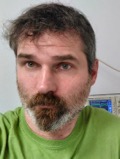
Francesco Nozzoli Trento Institute for Fundamental Physics and Applications - INFN
The exploration of the Universe through cosmic rays, along with electromagnetic radiation, gives us strong insights into the most extreme energetic cosmic phenomena.
In these lectures, I will describe the observational techniques used to study high-energy cosmic rays. The main emphasis on the direct detection of charged particles from space. I will review the main principles of charge and radiation detection, the design, performance and results on Galactic cosmic rays measurements from balloon-borne and space-based experiments.
References
- "Space-Based Cosmic-Ray and Gamma-Ray Detectors: a Review", L. Baldini, arXiv:1407.7631 https://arxiv.org/abs/1407.7631#
Useful books
- "Particle detectors", C. Grupen, B. Shwartz, Cambridge University Press, ISBN-0521840066,2008 https://www.cambridge.org/fr/academic/subjects/physics/particle-physics-and-nuclear-physics/particle-detectors-2nd-edition?format=PB
- "Introduction to Particle and Astroparticle Physics: Questions to the Universe", A. De Angelis & M. Pimenta, 2015, Springer Nature, ISBN-8847026873
Prerequisites
The course will mostly be self-contained.
THE TRANSITION FROM GALACTIC TO EXTRAGALACTIC COSMIC-RAYS

Denis Allard Laboratoire Astroparticule et Cosmologie
The cosmic-ray (CR) spectrum is spread over a huge energy range, covering more than 12 orders of magnitude. While we know for sure that low energy cosmic-rays are of Galactic origin, the origin of the “so called” ultra-high energy cosmic-ray (UHECR, say above \( 10^{19} \)eV) is more uncertain although their sources are widely believed to be mostly extragalactic. If this is true, a transition between the Galactic and extragalactic cosmic-ray components (GCR to EGCR transition) must take place “somewhere” in the CR spectrum. The goal of this presentation is to discuss experimental results and phenomenological aspects relevant to the understanding of this GCR to EGCR transition. We will first take a close look to the cosmic-ray spectrum to identify features (namely the knee and the ankle) which are probably related to the transition, we will then discuss the constraints brought by experimental results on the cosmic-ray composition and arrival directions above ~\( 10^{15} \)eV. We will see that the theoretical understanding of the propagation of extragalactic UHECRs can also give us some hints on the way the transition may take place as well as some predictions which can be compared to the data. We will finally briefly review recent experimental results which seem to favour an extragalactic origin for the highest energy cosmic-rays as well as a few key short term or mid term experiments which should provide tighter constraints on the GCR to EGCR transition.
References
- "Extragalactic propagation of ultrahigh energy cosmic-rays", Allard D., Astropart.Phys. 39-40 (2012) 33-43 - arXiv:1111.3290
- Aab A., et al. (Pierre Auger Collaboration), Phys. Rev. D 91 2003 (2015) and refs therein
Useful books
- "High Energy Astrophysics", Longair M. S., Cambridge University Press (2011)
Prerequisites
The course will mostly be self-contained.
INDIRECT MEASUREMENTS
GALACTIC COSMIC RAY ORIGIN AND COMPOSITION

Vincent Tatischeff Centre de Sciences Nucléaires et de Sciences de la Matière
Despite a century of observational and theoretical research, the origin of Galactic cosmic rays remains highly debated. In these lectures I will first present the main astrophysical sites where cosmic rays are thought to be produced: supernova remnants, massive star clusters and superbubbles. I will review the evidence for particle acceleration in these objects and then discuss the important clues to the origin of Galactic cosmic rays provided by their source composition.
References
- "Particle Acceleration by Supernova Shocks and Spallogenic Nucleosynthesis of Light Elements", V. Tatischeff & S. Gabici, Annual Review of Nuclear and Particle Science, vol. 68, pp. 377-404, - arxiv.org/abs/1803.01794
Prerequisites
The course will mostly be self-contained.
INTRODUCTION TO MULTI-MESSENGER ASTRONOMY

Andrii Neronov, Astroparticle and Cosmology laboratory & Université de Genève
The new field of multi-messenger astronomy aims at the study of astronomical sources using different types of "messenger" particles: photons, neutrinos, cosmic rays and gravitational waves. These lectures provide an introductory overview of the observational techniques used for each type of astronomical messenger, of different types of astronomical sources observed through different messenger channels and of the main physical processes involved in production of the messenger particles and their propagation through the Universe.
References
- "Introduction to multi-messenger astronomy", Andrii Neronov, J.Phys.Conf.Ser. 1263 (2019) no.1, 012001 : arXiv:1907.07392
Prerequisites
The course will mostly be self-contained.
HIGH-ENERGY INTERSTELLAR EMISSION AND COSMIC-RAY PROPAGATION

Guðlaugur Jóhannesson Science Institute, University of Iceland and NORDITA
In these lectures I will talk about high-energy emission resulting from interactions between cosmic rays (CRs) and the interstellar medium (ISM). A brief overview will be given of the astrophysics of the ISM and how it relates to prediction of the high-energy emission. Results based on observation of the high-energy emission made with the Fermi Large Area Telescope (LAT) will be presented and discussed.
References
— A book on the physics of the ISM
- "Physical Processes in the Interstellar Medium" (Chapters 1 to 4), Lyman Spitzer Jr, John Wiley & Sons, (1978) : http://adsabs.harvard.edu/abs/1978ppim.book.....S
— Review articles on Cosmic Rays
- "The Nine Lives of Cosmic Rays in Galaxies", Grenier, Isabelle A.; Black, John H.; Strong, Andrew W., Annual Review of Astronomy and Astrophysics, vol. 53, p.199-246 (2015) no.1, 012001 : https://www.annualreviews.org/doi/10.1146/annurev-astro-082214-122457
- "Cosmic-Ray Propagation and Interactions in the Galaxy", Strong, Andrew W.; Moskalenko, Igor V.; Ptuskin, Vladimir S., Annual Review of Nuclear and Particle Science, vol. 57, Issue 1, p.285-327: https://www.annualreviews.org/doi/10.1146/annurev.nucl.57.090506.123011
— Articles on interstellar emission
- "The interstellar environment of our galaxy", Ferrière, Katia M., Rev.Mod.Phys.73:1031-1066,2001: https://arxiv.org/abs/astro-ph/0106359
- "Fermi-LAT Observations of the Diffuse γ-Ray Emission: Implications for Cosmic Rays and the Interstellar Medium"", Ackermann et al. 2012, ApJ, 750, 1, 35: https://arxiv.org/abs/1202.4039v2
Prerequisites
By assuming the Maurin's courses be acquired, this one will be self-contained.
GALPROP code -- Hands-On experience

Guðlaugur Jóhannesson Science Institute, University of Iceland and NORDITA
GALPROP is a numerical code for calculating the propagation of relativistic charged particles and the diffuse emissions produced during their propagation. The GALPROP code incorporates as much realistic astrophysical input as possible together with latest theoretical developments. The code calculates the propagation of cosmic-ray nuclei, antiprotons, electrons and positrons, and computes diffuse γ-rays and synchrotron emission in the same framework. Each run of the code is governed by a configuration file allowing the user to specify and control many details of the calculation. In this hands-on lecture we will go through the basics of the GALPROP code and perform some minimal GALPROP runs for demonstration.
Upload the documents for Hands-On.
References
- "The GALPROP code for cosmic-ray transport and diffuse emission production" : https://galprop.stanford.edu/
Prerequisites
Students should be familiar with cosmic ray transport and the resulting non-thermal interstellar emission.
It would be best if students had already installed the code on their computers, but it is not a requirement. Windows computers are unfortunately not supported at this time.
SIMULATION AND ANALYSIS OF CTA DATA
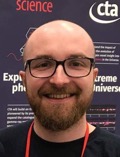
Luigi Tibaldo IRAP/Observ. Midi-Pyrénées Université Toulouse III-Paul Sabatier
In this class you will learn how to perform simulations and analysis of data from the Cherenkov Telescope Array (CTA) using the open source package ctools.
The Cherenkov Telescope Array (CTA) is the next generation ground-based observatory for gamma-ray astronomy at very-high energies. With more than 100 telescopes located in the northern and southern hemispheres, in a few years CTA will be the world’s largest and most sensitive high-energy gamma-ray observatory [1]. Building on the technology of current generation arrays of Imaging Atmospheric Cherenkov Telescopes (IACTs, e.g., H.E.S.S., VERITAS and MAGIC), CTA will help to address some of the most perplexing questions in astrophysics, seeking to understand the origin and role of relativistic cosmic particles, probe extreme environments, and explore physics frontiers [2].
CTA will be operated as an open, proposal-driven observatory. The CTA observatory will put in place a pipeline for data calibration, event reconstruction, and event classification that will make it possible to distribute “Science-ready” data in the form of event lists to the the world-wide scientific community. In this class you will learn how to perform simulations and analysis of CTA data using ctools [3], an open source data analysis package targeted towards CTA and designed to be easily adapted for use with data from past, present, and future high energy photon-counting detectors. Already, the tools have been applied to H.E.S.S., Fermi-LAT, and COMPTEL data as well as simulated CTA observations.
First of all you will be walked through an example, in the form of a Jupyter notebook, that illustrates how to simulate observations of a source with CTA and how to analyze the data to reconstruct its spectrum using ctools. We will demonstrate both a standard On/Off spectral analysis typical of current generation IACTs, as well as a three-dimensional analysis that relies on a parametrized joint modelling of the spatial and spectral event distributions, comprising model components for gamma- ray sources and background events. A project session will follow, during which you will choose an exercise from a list of assignments and you will carry it out under the supervision of the instructor.
Program
- Introduction
- CTA and the CTA Science program
- Data analysis of IACTs with ctools
- Example: simulation of CTA observations of a source and reconstruction of its spectrum
- Student project
Hands-On preparation
Participants must install the softwares and retrieve the data before coming to the course.
INSTRUCTIONS
- [1] Install ctools. Recommended option: install using conda.
- [2] Install for the same Python interpreter matplotlib and Jupyter notebook (using conda, $ conda install matplotlib jupyter).
- [3] Get the latest CTA IRFs (prod3b-v2 available from: cta-observatory, installation instructions at ctools.
- [4] Get H.E.S.S. public data (tutorials).
- [5] Get the Jupyter notebooks.
References
- [1] Cherenkov Telescope Array
- [2] Science with the Cherenkov Telescope Array
- [3] Cherenkov Telescope Array Science Analysis Software
Prerequisites
The course will mostly be self-contained.
CHASING GALACTIC COSMIC-RAY SOURCES WITH GAMMA RAYS
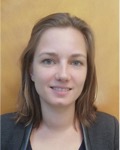
Justine Devin Centre d'Études Nucléaires de Bordeaux Gradignan
Supernova remnants (SNRs) and pulsar wind nebulae (PWNe) have long been thought to be the most-likely sources of Galactic cosmic rays, accelerating charged particles to PeV energies. Understanding the nature of their gamma-ray emission allows probing the population of high-energy particles (leptons or hadrons) and the maximum energy they reach in these Galactic accelerators. The lecture will introduce the different types of gamma-ray sources in our Galaxy, with a particular focus on SNRs and PWNe. The GeV/TeV sky will be presented, as the method used to identify and analyze gamma-ray sources. I will give an overview of what we have learned from SNRs and PWNe with gamma-ray observations and our expectations concerning future experiments.
References
- "Disentangling hadronic from leptonic emission in the composite SNR G326.3-1.8", Devin, J., Acero, F., Ballet, J., & Schmid, J. 2018, A&A, 617, A5: https://www.aanda.org/articles/aa/abs/2018/09/aa33008-18/aa33008-18.html
- "The H.E.S.S. Galactic Plane Survey", H. E. S. S. Collaboration, Abdalla, H., Abramowski, A., et al. 2018d, A&A, 612, A1 : https://www.aanda.org/articles/aa/abs/2018/04/aa32098-17/aa32098-17.html
- "Science with the Cherenkov Telescope Array", Cherenkov Telescope Array Consortium, Acharya, B. S., Agudo, I., et al. 2019: https://ui.adsabs.harvard.edu/abs/2019scta.book.....C/abstract
Prerequisites
The course will mostly be self-contained.
COSMIC RAYS AND THE INTERSTELLAR MEDIUM
IMPACT OF LOW-ENERGY COSMIC RAYS ON THE INTERSTELLAR MEDIUM AND ON GALACTIC STAR FORMATION
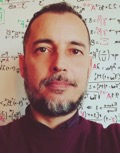
Marco Padovani INAF, Osservatorio Astrofisico di Arcetri
In recent years a wealth of ground and space observations has provided new constraints on the role of low-energy cosmic rays ($E<10-100 {\rmGeV}$) in various astrophysical environments. Cosmic rays are involved in several processes related to Galactic star formation at different spatial and time scales. They trigger the complex chemistry observed in molecular clouds, in particular they determine the ionisation fraction that regulates the degree of coupling between gas and magnetic field. The latter, in turn, controls the cloud collapse and the formation of circumstellar discs. Cosmic rays also underlie the basic processes for dust grain charge and coalescence, explain energetic phenomena in protostars such as synchrotron emission in jets, determine the atomic hydrogen fraction in dark clouds, affect the chemical composition of planetary atmospheres, and much more. I will present the most recent results on cosmic-ray physics and chemistry in star-forming regions obtained by analytical and numerical models supplemented by dedicated observations.
- Lecture 1 – Effects of Interstellar cosmic rays
- Lecture 2 – Effects of cosmic rays locally generated in protostellar environments
References
Lecture 1
- "Cosmic-ray ionization of molecular clouds", Padovani, Galli & Glassgold 2009, - A&A, 501, 619
- "Effects of magnetic fields on the cosmic-ray ionization of molecular cloud cores", Padovani & Galli 2011, - A&A, 530, A109
- "Cosmic-ray ionisation in collapsing clouds", Padovani, Hennebelle & Galli 2013, - A&A, 560, A114
- "The role of cosmic rays on magnetic field diffusion and the formation of protostellar discs", Padovani, Galli, Hennebelle, Commerçon & Joos 2014, A&A, 571, A33- arxiv:1404.2601
- "Interstellar dust charging in dense molecular clouds: cosmic ray effects", Ivlev, Padovani, Galli & Caselli 2015, - ApJ, 812, 135
- "Cosmic-ray ionisation in circumstellar discs", Padovani, Ivlev, Galli & Caselli 2018, - A&A, 614, A111
- "Production of atomic hydrogen by cosmic rays in dark clouds", Padovani, Galli, Ivlev, Caselli & Ferrara 2018, - A&A, 619, A144
- "Synchrotron emission in molecular cloud cores: the SKA view", Padovani & Galli 2018, - A&A, 620, L4
Lecture 2
- "Cosmic-ray acceleration in young protostars", Padovani, Hennebelle, Marcowith & Ferrière 2015, - A&A, 582, L13
- "Protostars: Forges of cosmic rays?", Padovani, Marcowith, Hennebelle & Ferrière 2016, - A&A, 590, A8
- "Non-thermal emission from cosmic rays accelerated in HII regions", Padovani, Marcowith, Sánchez-Monge, Meng & Schilke, 2019, - A&A, in press
Prerequisites
- "Cosmic-ray astrochemistry", Nick Indriolo, Benjamin J. Mc Call 2013, - Chemical Society Reviews, Vol. 42, pp. 7763-7773
- "Our astrochemical heritage ", Paola Caselli, Cecilia Ceccarelli, 2012, - The Astronomy and Astrophysics Review, 590, A8
GALACTIC INTERSTELLAR DUST: THE 3D ERA

Rosine Lallement Galaxies Etoiles Physique Instrumentation, Observatoire de Paris
An unprecedented amount of stellar data is currently being collected that can be used to reconstruct the 3D distribution of the interstellar matter in the Milky Way. First and foremost, Gaia has begun to provide parallaxes for hundreds of millions of stars and accurate photometric data for more than a billion objects. Huge photometric datasets, on the other hand, come from massive ground-based stellar surveys that benefit from highly-automated telescopes, wide and sensitive array detectors and multi-fiber or integral field unit systems allowing to observed hundreds of targets simultaneously. All these measurements can be used in different ways to estimate the stellar light extinction generated by the interstellar dust along all lines of sight. Subsequent inversions of the reddening radial profiles or full 3D tomographic inversions of individual measurements lead to the 3D distribution of the dust. The main content of the presentation will be :
- 1) the description of the data,
- 2) the classical or statistical models used to derive extinctions,
- 3) the different methods used to synthesize all the information on the extinction and locate dust clouds in 3D space.
References
- "A 3D Dust Map Based on Gaia, Pan-STARRS 1 and 2MASS", Green, Gregory M.; Schlafly, Edward F.; Zucker, Catherine; Speagle, Joshua S.; Finkbeiner, Douglas P.: https://ui.adsabs.harvard.edu/abs/2019arXiv190502734G/abstract
- "Gaia-2MASS 3D maps of Galactic interstellar dust within 3 kpc", Lallement, R.; Babusiaux, C.; Vergely, J. L.; Katz, D.; Arenou, F.; Valette, B.; Hottier, C.; Capitanio, L. , A&A, 625, 135, 2019 : https:/https://ui.adsabs.harvard.edu/link_gateway/2019A%26A...625A.135L/PUB_PDF
Prerequisites
The course will mostly be self-contained.
COSMIC RAYS AND DARK MATTER
SCENARIOS OF DARK MATTER, AND THEIR PROBE IN THE MULTIMESSENGER SKY
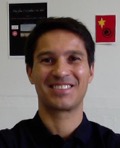
Julien Lavalle Laboratoire Univers et Particules de Montpellier
I will introduce the main scenarios of dark matter (mostly particle dark matter), and review their potential multimessenger astrophysical signatures.
References
- "Dark Matter Candidates from Particle Physics and Methods of Detection", Jonathan L. Feng, Ann. Rev. Astron. Astrophys. 48: 495, 2010:arxiv.org/abs/1003.0904
- "Dark Matter Indirect Signatures", Julien Lavalle, Pierre Salati, Comptes Rendus Physique, Volume 13, Issue 6, p. 740-782 (2012) : arxiv.org/abs/1205.1004/
- "Axion Cosmology", David J. E. Marsh, Physics Reports 643, 1-79 ( 2016): arxiv.org/abs/1510.07633v2
- "Primordial Black Holes as Dark Matter", Bernard Carr, Florian Kuhnel, Marit Sandstad, Phys. Rev. D 94, 083504 (2016): arxiv.org/abs/1607.06077
- "Sterile Neutrino Dark Matter", A. Boyarsky, M. Drewes, T. Lasserre, S. Mertens, O. Ruchayskiy, Progress in Particle and Nuclear Physics 104, 1-45 ( 2019) : arxiv.org/abs/1807.07938
Prerequisites
The course will mostly be self-contained, but ..
DIRECT SEARCH FOR DARK MATTER PARTICLES
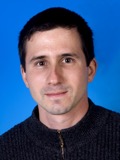
Eric Armengaud Institut de recherche sur les lois fondamentales de l'Univers/DPhP CEA Saclay
Among the proposed candidates for dark matter particles, many have non-gravitational interactions with ordinary matter. Since the Earth should be embedded within the Milky Way's halo of dark matter, such particles could be detected by a terrestrial experimental apparatus. In this lecture I will overview past, present and future "direct searches" for several dark matter candidates : searches for WIMPs, which have been the most popular candidate (at least in terms of experimental investment), but also for lighter and heavier dark matter models, as well as for several models of axions and axion-like particles.
References
- Reviews on WIMPs (phenomenology, a bit old)
- "Particle Dark Matter: Evidence, Candidates and Constraints", Gianfranco Bertone, Dan Hooper, Joseph Silk, Phys. Rept., 405 :279–390, (2005):arxiv.org/abs/hep-ph/0404175
- "Dark Matter Candidates from Particle Physics and Methods of Detection", Jonathan L. Feng, Ann.Rev.Astron.Astrophys., 48, 495-545.5(2010):https://arxiv.org/abs/1003.0904
- Experimental review
- "Dark matter direct-detection experiments", Teresa Marrodan Undagoitia, Ludwig Rauch, J. Phys., J. Phys. G43 (2016) :https://arxiv.org/abs/1509.08767
- "Seminal article" on WIMP detection
- "Detectability of certain dark-matter candidates", Mark W. Goodman and Edward Witten, Phys. Rev. D 31, 3059 (1985) :http://hep.ucsb.edu/people/hnn/susy/goodwit/goodwit.pdf
- Currently the best limit on WIMPs (most standard "channel")
- "Dark Matter Search Results from a One Ton-Year Exposure of XENON1T", E. Aprile et al. (XENON Collaboration) Phys. Rev. Lett. 121, 111302 (2018) :https://arxiv.org/abs/1805.12562
- Prospects for DM search in particular other models than WIMPs
- "US Cosmic Visions: New Ideas in Dark Matter 2017: Community Report", M Battaglieri et al. Phys. Rev. Lett. 121, 111302 (2018) :https://arxiv.org/abs/1707.04591
Prerequisites
The course will generally be self-contained, but the introduction of Julien Lavalle's course on dark matter will be useful.
PARTICIPANT SEMINARS AND POSTERS
Participants are invited to submit a talk / poster, see the registration page. The posters will be displayed throughout the week and will be introduced briefly during the oral session.